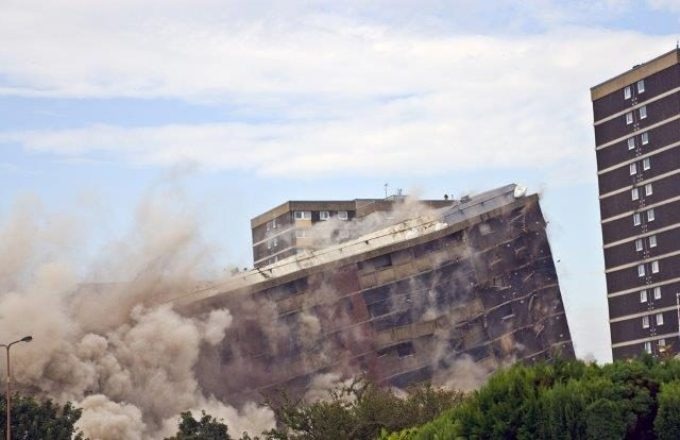Apr 20 2018
When buildings collapse from bombings, earthquakes, or other disasters, the foremost step is to rescue people who may be trapped in the debris. However, it can be difficult to find entrapped people among the huge rubble. Now, researchers have developed a low-cost, selective sensor that is portable and lightweight enough to be held by first responders and can be carried by drones during search and rescue operations. The study has been reported in the ACS journal, Analytical Chemistry.
 A new sensor could aid first responders in their search for survivors after buildings collapse. (Image credit: Linda Macpherson/Shutterstock.com)
A new sensor could aid first responders in their search for survivors after buildings collapse. (Image credit: Linda Macpherson/Shutterstock.com)
In the wake of a destruction-causing incident, the survival rate of humans trapped in the ruins drops quickly, which means it is important to reach there fast. In existing methods, human-sniffing dogs and acoustic probes that are capable of detecting cries for help are traditionally used. However, these approaches have certain disadvantages, for example, the silence of unconscious victims and the limited availability of canines.
A human chemical signature contains molecules that waft off the skin or that are exhaled. Devices that are capable of detecting such chemical signature shows immense potential, but so far, these products are too costly and bulky and thus impractical for wide implementation. In addition, they can overlook signals that are present at very low concentrations. Therefore, Sotiris E. Pratsinis and team wanted to develop a compact, low-cost sensor array that can detect even the faintest signs of life.
The scientists used three existing gas sensors to build their palm-sized sensor array, with each sensor customized to detect a particular emitted by skin or breath: isoprene, ammonia or acetone. For detecting CO2 and humidity, the researchers also included two commercially available sensors. In a simulation of human entrapment, the sensors quickly detected trace amounts of these chemicals down to three parts per billion—levels that are unparalleled for portable detectors. Now, the next step is to test the palm-sized sensor array in the field under similar conditions as those predicted in the wake of a disaster.
The authors acknowledge funding from the European Union’s Horizon 2020 research and innovation program, the Swiss National Science Foundation, and the Austrian Research Promotion Agency.